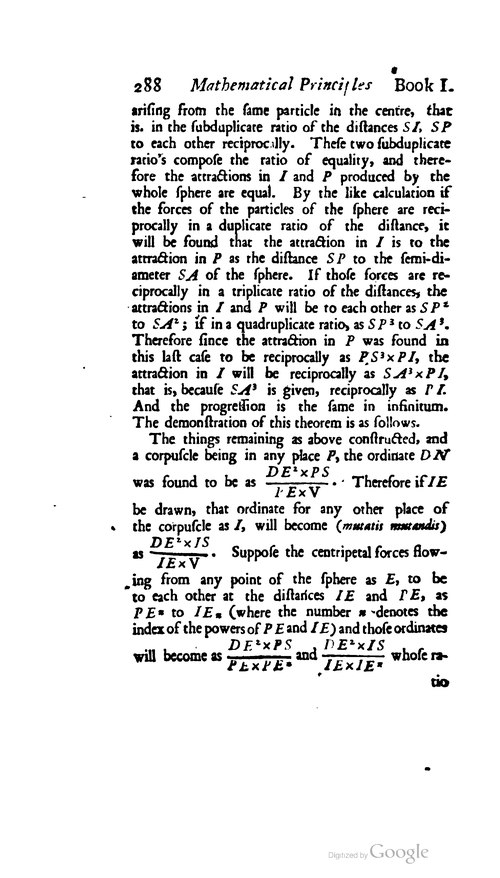ariſing from the ſame particle in the centre, that is, in the ſubduplicate ratio of the diſtances SI, SP to each other reciprocally. Theſe two ſubduplicate ratio's compoſe the ratio of equality, and therefore the attractions in I and P produced by the whole ſphere are equal. By the like calculation if the forces of the particles of the ſphere are reciprocally in a duplicate ratio of the diſtance, it will be found that the attraction in I is to the attraction in P as the diſŧance SP to the ſemi-diameter SA of the ſphere. If thoſe forces are reciprocally in a triplicate ratio of the diſtances, the attractions in I and P will be to each other as to ; if in a quadruplicate ratio as to . Therefore ſince the attraction in P was found in this laſt caſe to be reciprocally as , the attraction in I will be reciprocally as , that is, becauſe is given, reciprocally as . And the progreſſion is the ſame in infinitum. The demonſtration of this theorem is as follows.
The things remaining as above conſtructed and a corpuſcle being in any place P, the ordinate DN was found to be as . Therefore if IE be drawn, that ordinate For any other place of the corpuſcle as I, will become (mutatis mutandis) as . Suppoſe the centripetal forces flowing from any point of the ſphere as E, to be to each other at the diſŧances IE and PE, as to , (where the number in n denotes the index of the powers of PE and IE) and thoſe ordinates will become as and whoſe ratio












